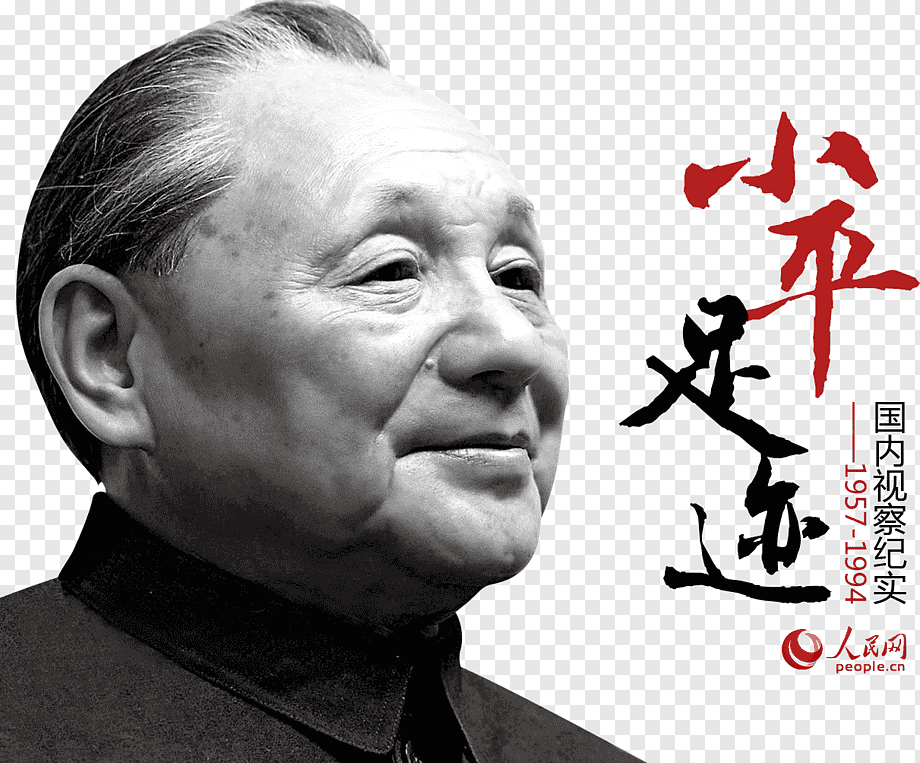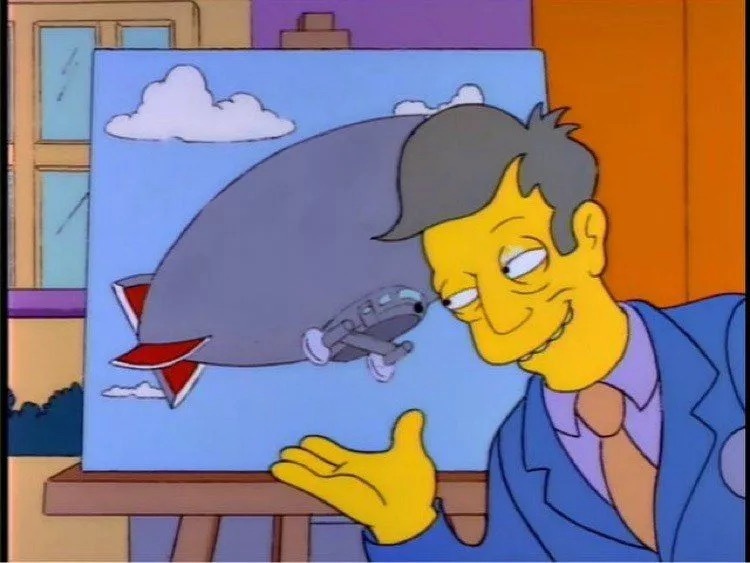Ooft, how can I put this succinctly…
Essentially it boils down to the ever increasing proportion of fixed capital versus variable capital. Capitalist competition forces producers to invest more and more capital in technology to produce things more quickly, more cheaply, etc. Basically think of an autoplant that originally had a bunch of guys on an assembly line but now has a bunch of robots doing it.
Since human labour power is the only method of creating new value, and value is (obviously) the source of surplus value, this causes (over the entire capitalist economy over the long term, individual capitalists and businesses can still increase profits, e.g. by increasing the rate of exploitation) the TRPF.
Let’s say capitalist A inputs $1000 of raw materials and pays his workers $1000, during which time they create products he can sell for $10,000. A nice 400% profit!
Now capitalist B has a tonne of robots and automation to make his products - let’s say $10,000 worth of robots. He still pays his workers $1000 and inputs $1000 of raw material. If his robots means his workers are four times as efficient as capitalist A’s workers, they can make 4 times as many products in the same time.
This is where the labour theory of value kicks in. Fixed capital transfers its value to the product but DOES NOT CREATE NEW VALUE. Over the life of those robots, they will slowly but surely drip feed their $10,000 of value into the products they make, the same way a lump of raw iron transfers its value into a finished product. But it is only the human labour power that creates new value in the finished product.
All this means that although capitalist B is making 4 times as many products in the same timeframe, each product has 4 times less socially necessary labour time (aka value) imbued into it. Since value is (rather obviously) the source of surplus value, the capitalists have a problem.
While he may be able to make out like a bandit initially, selling his product (which has a quarter of the value of capitalist A’s product) for the same price or slightly cheaper than capitalist A, even if he sells them for the same price - $40,000 worth of products - his input was $12,000 (labour plus robots plus raw materials). Here we can see his RATE OF PROFIT HAS FALLEN.
As the general scramble of capitalist production continues, competing capitalists will ALSO invest in technology to increase their efficiency of production, or be defeated in the constant anarchic war between competing capitalists. This means eventually the surviving capitalists will ALL be using $10,000 worth of robots, and everyone’s rate of profit will have fallen, due to the larger ratio of fixed capital to variable capital.
And then… capitalist C figures out there’s a new robot which can make things 8 times faster, so he starts using $20,000 worth of robots, while still paying for $1,000 of labour and $1,000 of raw materials…
Hopefully that sort of explains it. I’m sure there are some videos on YouTube or something that can do a better job than me though!
constant anarchic war between competing capitalists
:sicko-wistful:
The rate of profits stops falling when competition has been driven out and you have oligopolies/monopolies and they make super-profits. This is shit and is one of the key times those assets should be appropriated and prices brought down to "the socially necessary amount of labour", even in a liberal democracy.
Capitalism has a lot of rate of profit problems. I think you're probably thinking of the tendency of the rate of profit to fall (TRPF), though, which is an idea Marx touched on and that Marxists later got very interested in because taken to its natural conclusion it means capitalism has a particular death spiral.
I'll give a short description, but also it's best to read Marx directly, because even though it takes a good amount of time, uses references and language specific to the 19th century, and is just plain dense, there is no substitute for understanding what the heck he was talking about and responding to and I have yet to find an explainer that doesn't inject some factionalism, and usually a liberal Western academic one.
Anyways, the short version is that under relatively typical conditions of capitalism, the overall bulk rate of profit should tend to go down. The rate of profit is a percentage - if the company makes $520 and spends $500, then the rate of profit can be found by dividing and subtracting 1: 520/500-1=1.04-1=0.04=4%. So, aggregated over all companies and profits, TRPF says it tends to go down. "Tends" means it will sometimes go up as well, but if you plot a line through it over many years, it'll be sloped down.
Under capitalism, the whole system is premised on maximizing profit: it's how you compete, it's how you get bigger, and therefore how you gain power and get what you want. Under this model of capitalism, profit-seeking is key to investment in the first place, as the only reason to invest is an expectation of return. If profit rates get too low, investmemt ceases ans there is a crisis.
The focus on TRPF is whether itb s an inherent property of capitalism, for which Marx set up an argument. There are more subtleties to it (read Marx!) but I will give the simplified version.
The basic math is that under conditions of capitalist competition, profit-seeking occurs through cost reductions: spending less than $500 above means more profit. Costs can be split into two categories: labor and everything else. There tendd to be an incentive to automate, which shifts costs from labor into the "everything else" category, so long as the total cost is lower. ATMs are cheaper for banks than employing a bunch of tellers.
When a given company takes the first step in automation, they cut their costs and therefore increase their own profits. However, other companies can also simply buy the automating thing, so they will also do this and then cut their prices in an attempt to compete. This means the equilibrium from automation doesn't result in increased profits in aggregate over time, and could even be a zero-sum game.
The Marxist nail in the coffin is the explanation of how value is created via labor, which translates (simplified) into profit truly emerging from a graft of workers' labor to the company (capitalist), so if the amount of labor required to make a thing goes down, so does thr room for profit. Capitalism incentivizes a decrease in its own rate of profit.
Please keep in mind that Marx's argument is better than this and really getting it requires understanding his formulation of value in the production and exchange of commodities. It is also something that starts as a first principles argument but is best understood situationalky and through the analysis of real crises of capitalism. Michael Roberts has written pretty well about this.
I think a tangential but very relevant read of the TRPF is that it explains the continued expansion of the capital and extraction frontier, and current-day colonialism and imperialism. The rate of profit can only rise by cutting costs or selling more while keeping costs relatively the same, therefore there is a constant need to find new labor pools that can be used to further cut costs, and at the same time, inserting that previously untapped population into the profit-generating system. That is why capitalism increasingly sticks its nose in the Global South, to extract labor, resources, and profit at very little cost.
That's very much true, though it also doesn't require TRPF to be a behavior of capital. Capital needs to locally maximize profit even if it's at some equilibrium or profits are already pretty high. It wants the overseas wage slave labor force in order to take profits of 30% instead of 25%. The system creates these monsters.
TRPF particularly derives, in real terms, as a greater acculation of debts that must be paid off. Those debts are the offset of not paying labor. One of Marx's driving insights was that automation was self-accelerating, and so companies would more and more quickly deprecate perfectly functional machines in order to stay competitive. This shifts costs not only away from labor, but away from maintenance and to debts to fund new machinery.
The most hortible consequence is the increasing power of finance capital due to such a shift. Marx thought it would be kept in check (and that workers demanding power would be part of that), but he ended up only being righy about both in the regrettably small number of countries that had successful revolutions. In capitalist countries, finance ran wild, so we get neoliberalism, which creates profit from the dismantling of productive forces.
We also come full circle there, as neoliberalism is also imperialist. It wants those extra profits in dismantling a healthcare system 6000 miles from the company's offices. In fact, it needs expansion even more than industrial capital, as it's built entirely on a house of cards and cannot increase its own productive forces (it doesn't produce!).
*1.04-1 lol i looked for a while despite knowing the calc because of this. Thought you did some "multiply all terms by 2"action or something
Ruh roh typo!
I installed an open source keyboard on my phone and I'm pretty bad with it lol. Will fix the typo, thanks!
In the quest to make as much money as possible, capitalists actually create the conditions that produce less profit. They create conditions that pay workers less over time which means workers can't afford to buy the goods they produce which means a smaller market for the piggies. They can get around this by expanding into new markets (international business) but that only works for so long. Eventually they can't keep growing and in order for investors to keep making money they have to start cutting costs internally which ultimately hurts the business/economy as a whole.
That's actually a separate issue, crises of overproduction are unique to capitalism because of "anarchistic" production.
Decreasing rate of profit is what happens with "innovation". As you develop the means of production, you increase the productivity of a working hour at the expense of a larger capital outlay in means of production. This creates the conditions for monopoly as the only capitals able to front the money for a profitable enterprise are existing large ones.
Small firms are pushed out because the profitability of a working hour is set by the output of the large manufacturers, so as those small holders fail, their workforces go to work for the large capital for less pay even though their productive output is higher because they're paying for the cost of the initial capital outlay with their surplus value.
Profit = ($$$ capitalist makes) - (starting investment) - (labor)
How bigger profit?
Pay less to labor.
How pay less to labor?
Make innovation. (Product. Robot. Shitty labor laws in your state / country.)
BUT others copy innovation. (Other capitalists make same product / robot / labor laws in their country.)
Competition --> profit-making innovation.
Competition --> innovation spreading.
EXAMPLE: iPhone. When iPhone new, everyone pay $$$$$$$ for iPhone. Cheap labor + expensive phone = profit.
BUT now Apple, Samsung, etc. all have basically same phone.
Innovations become stupid. 5 iPhone cameras --> 6 iPhone cameras! SOYFACE!
Same thing applies to all commodities.
(Also, fall of USSR and end of space / technology race led to less publicly funded technological innovation, which was often appropriated by capitalists, ESPECAILLY in Silicon Valley... Internet was originally a publicly funded government project.)
More capitalism --> harder to do capitalism --> falling rate of profit --> harder to get passive income
Result?
Reversion to Fedualism
Feudalism = rent seeking
In future, you pay more for things you already have
Rent = more expensive ; subscriptions = more expensive ; Intellectual Property = more expensive
What happens next?
France 1789, Russia 1917, Cuba 1959, etc.
Further reading: Marx, Engles, etc.
Goods are priced based on cost of inputs to make those goods. Labor is generally the most expensive input and Marx theorized that labor is the primary way goods get value. You need someone to make something. Raw iron has no value if you have nobody to smelt it. Cotton has no value with nobody to weave it.
Capitalists get profit by selling goods at a higher cost than they pay to make goods. So capitalists generally like to reinvest their profit into labor saving machinery. Labor is the highest cost usually, so saving money on labor is always good.
In the short run, buying a machine that makes 10 t-shirts an hour and paying one person to operate it is more profitable than paying 10 people to make 10 t-shirts an hour by hand.
So the first capitalist to invent this t-shirt making machine will reap enormous profits because now they don't have to pay 10 people to make those t-shirts. They buy one machine once and it does all the work. They can sell the shirts at 1/10th of the price and blow their competitors out of the water.
But wait I thought you said value is derived from labor, this example shows a capitalist making more money by reducing labor. Here's where it gets tricky.
Other t-shirt making capitalists will see the profits to be made and will eventually get their own t-shirt making machine. If they don't, they'll have to continue paying 10 people to make 10 shirts and will eventually get beaten by the t-shirt machine. So while the inventor of the t-shirt machine made enormous profits in the short run, eventually the rest of the t-shirt making industry will adapt with their own machines or will get priced out.
So now everyone in the t-shirt business has these machines, so they have to continue lowering prices to be competitive. Eventually, all the t-shirt sellers will settle on one price, which is the bare minimum cost of paying one person to operate the t-shirt machine. Each time a seller lowers their prices, they reduce their profits. Before the t-shirt machine was invented, paying workers to make a t-shirt was relatively expensive. Now that EVERYONE has a t-shirt machine, the cost of making a t-shirt is very cheap (once you have the machine that is).
Since the t-shirt is so cheap to make and anyone with upfront capital can get their hands on a t-shirt machine, t-shirts have to be sold for cheap. Which means the industry as a whole isn't making as much profit as they were when humans made the t-shirts. Production of t-shirts are more efficient with the t-shirt machine, but because capitalists always try to undercut eachother they will get sold for cheaper.
If all the capitalists in one industry agree to to not undercut eachother, it's an oligopoly and those are "technically" illegal. Oligopolies and monopolies are one way that capitalists try to keep onto profit. Otherwise, they have to make more cuts on the production side. Cutting wages is one way to save money on inputs. Securing a cheaper raw material is another way. But you can only find so many cheap raw materials, you can only cut wages so many times before you can't make anymore cuts. So assuming the industry doesn't form a monopoly or oligopoly, the profit will always fall in the long term, even if capitalists make massive short term profits.
The amount of profit that can be extracted per unit of investment was predicted to fall over long timelines (ie a general tendency). This is tied to the labor theory of value and dead labor.
Rate of profit = surplus value / capital invested
Surplus value is created by living labor (aka variable capital or the actual workers) not by machinery (dead labor aka constant capital)
Since capitalism incentivises capital accumulation, it incentivises increased productivity. You can only exploit living labor so much hence more and productivity is extracted through machinery. Since surplus value is a function of living labor and living labor gets more and more dwarfed by constant capital the rate of profit falls as per equation above.
Capitalist A is in competition in the same market with Capitalist B. Capitalist B takes advantage of (new technology, child labor, wage theft, offshoring, slave labor, etc) to extract more surplus value from their workers. This allows them to undercut Capitalist A's prices. Capitalist A is forced to lower their prices to stay competitive and seek out their own cost cutting measures. This cycle repeats ad nauseum , requiring the Capitalists to seek out more markets to expand their sales numbers to make up for the lower profits on each individual item so they can still show overall profits.
I think.
As I understand it the TRPF is more about fixed vs variable capital (technology vs labour) and the other factors you mentioned (child labour etc) are ways of mitigating the TRPF by increasing the rate of exploitation
For sure. We’re talking about dialectics over the totality of the capitalist sphere of production, all these things are interrelated.
Word. I'm still working my way through introductory works before reading the real thing.
To make money you have to take it. To take it means they don't have it. Then you can't take any more. Is that a good fire style answer?
There are practical limits to innovation and investment. If profits are already close to zero due to intense competition and low barriers to entry, then any further decline in the rate of profit could make it even less attractive for companies to invest in innovation or new technologies. This could lead to a lack of innovation, a decline in productivity, and even the closure of some businesses.
A common general example is manufacturing consumer goods, but because of competition, the wages of the workers making them decrease (for short term profit by the bosses)
However, because the population has less and less discretionary income, they can’t afford the goods they produce! Which in turn creates surplus, depresses the market price and makes the goods ultimately unprofitable to sell.
food prices go up
wages stay the same
everyone gets fired
everyone can't afford food
store goes bankrupt because it's not profitting












